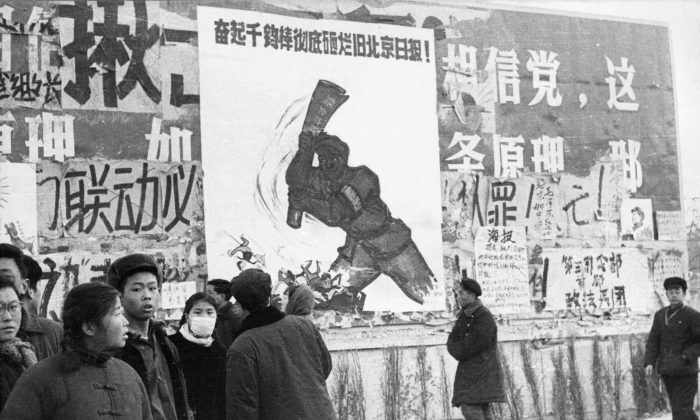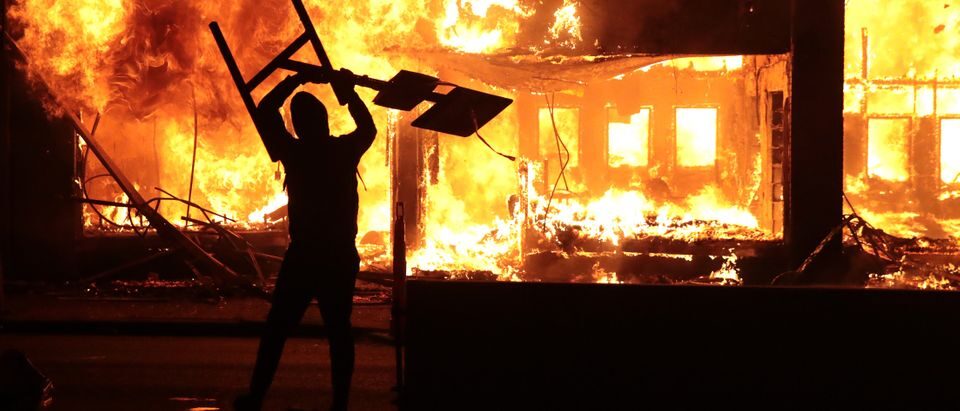
The Cultural Revolution, previously known as the Great Proletarian Cultural Revolution, was a multifaceted affair undergirded by a vicious, fanatical campaign to destroy the "Four Olds."
In 1971, The New York Times described the campaign thusly:
"One of the early objectives of the Cultural Revolution in China ... was to wipe out the 'four olds' — old things, old ideas, old customs, and old habits.Tragically, it seems as if the United States is in the midst of its own Cultural Revolution.
"The 'four olds' had already suffered setbacks in the years of Communist rule preceding the Cultural Revolution, but the Maoist leadership tried to use the new revolutionary upsurge launched in 1966 to eliminate them completely.
"In the turbulent years from 1966 to 1968, what remained of old religious practices, old superstitions, old festivals, old social practices such as traditional weddings and funerals, and old ways of dress were violently attacked and suppressed. Visual evidences of old things were destroyed, and there was an orgy of burning of old books and smashing of old art objects."
Like the Chinese Cultural Revolution, the current "revolution" in the United States is being waged by the youth — at the behest of radical leftists, of course.
Also, much like the Chinese Cultural Revolution of the 1960s, "Woke Revolution" in the United States is hellbent on destroying any and all vestiges of traditional society, especially those that celebrate freedom, individualism, and American exceptionalism, in general.
In China during the Cultural Revolution, as The New York Times describes, the "four olds" — old things, old ideas, old customs, and old habits — had to be eliminated.
In the United States during the Woke Revolution, we're following the same path.
- Old things, such as fossil fuels, the Founding Fathers, and the Electoral College must go.
- Old ideas, such as equality of opportunity and meritocracy, are now moot.
- Old customs, such as standing for the National Anthem and vigorously defending one's right to freedom of speech, are long gone.
- And, old habits, such as the Protestant work ethic and rugged individualism, have been seriously undermined.
The Woke Revolution, like the Cultural Revolution, is predicated on Marxist ideology.
Individualism is being replaced with communalism. Equity, better known as equality of outcome, now trumps equality of opportunity.
Sadly, even Martin Luther King Jr.'s "dream" of a color-blind society has given way to critical race theory, which is the epitome of racism.
And, above all else, class warfare reigns supreme. Rich versus poor. Privileged versus oppressed.
No longer is the United States the land of opportunity. Henceforth, it shall be known as the land of oppression. Or so we're told.
Perhaps most disconcerting when one compares the Cultural Revolution to the contemporary United States is the disdain for the past.
In China, this manifested in mass book burnings and wanton destruction of historic monuments. That sounds a lot like what's been happening in the United States recently.
The parallels between China's Cultural Revolution and the United States's Woke Revolution are becoming closer by the day.
As The New York Times article chronicling China's Cultural Revolution concluded:
"A new generation has appeared, and though much of the old China is too indelible to erase as yet, a new China with ways quite different from the old is in existence."The same could be said about the United States in 2021.
Chris Talgo is senior editor at The Heartland Institute.




Comment: Forewarned is forearmed. More on the background of this pernicious mind virus: